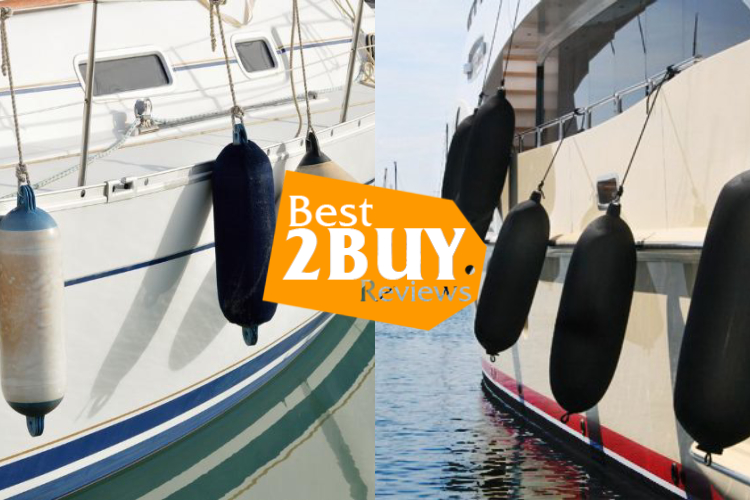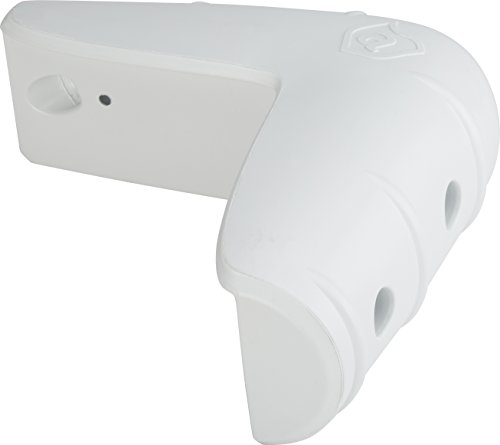How to Choose the Boat Fenders
Boat Fenders: A Comprehensive Guide

- 1. Boat Fenders: A Comprehensive Guide
- 1.1. What is a Boat Fender?
- 1.2. How Boat Fenders Work
- 1.3. Types of Boat Fenders
- 2. How To Choose Boat Fenders
- 2.1. Fender Types
- 2.2. Choosing the Right Size
- 2.3. Number and Placement
- 3. Cleaning, Storage, and Fender Accessories
- 3.1. Cleaning
- 3.2. Storage
- 3.3. Accessories
- 4. Conclusion
Boat fenders, those inconspicuous inflatable or foam devices attached to the sides of boats, may not immediately spring to mind when contemplating boating gear. Nevertheless, they assume a vital function in safeguarding vessels and prolonging their life, averting harm in harbors, marinas, and during the docking process. Within this piece, we shall venture into the realm of boat fenders, investigating their varieties, significance, upkeep, and the criteria for selecting the most suitable ones for your particular vessel.
What is a Boat Fender?
Boat fenders serve the purpose of safeguarding both boats during docking and the docking structure itself. They are specifically engineered to offer a cushioning effect for boats in the event of any collision, whether it occurs during the docking process, when the boat is tied up and comes into contact with the dock, or when it is moored alongside another vessel.
Marine fenders play a vital role in preserving the integrity of a boat's hull. They constitute an indispensable piece of equipment, ensuring that the boat's hull remains undamaged. From large ships and vessels to recreational boats and tugboats, marine fenders are indispensable and offer advantages across a wide spectrum of boat types.
How Boat Fenders Work
Whether they are made of inflated or soft foam, cylindrical, spherical, or flat, fenders serve the crucial purpose of absorbing the impact when vessels collide with docks or other boats. They act as a protective barrier, shielding the boat from damage and helping to slow it down as it moves back and forth.
When boats are moored to floating docks, it is common practice to position the fenders just above the waterline to create a cushioning zone between the dock and the boat. In contrast, boats that are tied together in a raft-like formation place the fenders at the point where the boats make contact, typically where the widest part of the boat, known as the beam, is located.
However, when docking alongside pilings, a unique challenge arises. The pilings have a tendency to displace the fenders, potentially causing damage to the boat. To address this issue, one effective solution is to use a fender board that spans the gap between the pilings. By combining the fenders and the board, a boat can be securely and comfortably docked against a wharf, minimizing the risk of damage.
Types of Boat Fenders
Boat fenders are available in various shapes and materials, each tailored for specific purposes. Below, we'll outline the most commonly used types:
- Cylindrical Fenders: These fenders take on a cylindrical shape and are typically constructed from vinyl or PVC. They are versatile and suitable for a wide range of boat sizes, making them a popular choice among recreational boaters.
- Round Fenders: Round fenders, often crafted from soft, inflatable materials, are ideal for boats with curved hulls. They offer robust protection against both low and high docks, ensuring your boat stays safe.
- Center Hole Fenders: Center hole fenders are designed with a central opening, allowing for various mounting options. They are favored for smaller vessels and are sometimes used as secondary fenders on larger boats.
- Flat Fenders: Also referred to as "dock plates" or "keel protectors," flat fenders are designed to lie flat against the boat's surface. They provide valuable safeguarding for the keel and hull, especially when approaching docks or other vessels.
- Inflatable Fenders: Inflatable fenders offer excellent portability and convenience. They can be deflated for easy storage and inflated when needed. These fenders are suitable for smaller boats and can be adjusted to the desired level of firmness.
- Hybrid Fenders: Hybrid fenders combine the benefits of a soft inflatable core with a durable outer layer. This combination results in outstanding protection and makes them a popular choice for larger boats where robust shielding is required.
How To Choose Boat Fenders
Fender Types
There is a variety of fender types designed to cater to different scenarios. In general, sausage or cylindrical double-eye fenders are more suitable for shorter and lighter vessels, while center hole, round, and hybrid cylindrical-round fenders are ideal for larger and heavier vessels. Additionally, there are specialized fenders like transom fenders tailored for specific mooring arrangements.
Choosing the Right Size
When selecting boat fenders, three primary factors should be taken into account:
- Boat Weight
- Boat Length
- Mooring Conditions
If your boat is exceptionally heavy for its size or if you expect harsh mooring conditions, it is advisable to opt for larger and more robust fenders than what sizing charts recommend. As a general guideline, a cylindrical fender should have a diameter of 1 inch (2 inches for round fenders) for every 4 to 5 feet of boat length.
Number and Placement
Proper deployment of fenders is crucial for them to effectively protect your boat. Consider the following guidelines for the number and positioning of fenders on your vessel:
- The rule of thumb for determining the number of fenders is to use one fender for every 10 feet of waterline, with a minimum of three fenders. For instance, a 20-foot boat should have at least 3 fenders, while a 40-foot boat should have 4.
- Position at least one fender at the maximum beam (widest point) of the boat, and distribute the others fore and aft as needed. When rafting (tying up alongside another vessel), it's a good practice to use more fenders. Place three at the maximum beam and two (preferably round fenders) fore and aft. Remember that having more fenders is better than meeting only the minimum requirements.
- To correctly position fenders, hang them so that the bottoms of the fenders barely touch the water's surface, and then raise them an inch or two. This prevents the dock from pushing the fender up and out of position while minimizing marine growth on the fender.
- Secure fenders to a sturdy anchor point, such as a cleat or station, rather than using lifelines, which are not designed to withstand the stress.
- Attach fenders as low as possible on the boat to limit their swing arc, ensuring that the fender maintains its intended position effectively.
Cleaning, Storage, and Fender Accessories
Cleaning
To maintain your fenders in top condition, clean them using a mild soap and water solution. Avoid using harsh cleaning agents like acetone or related products, as they can cause damage to your fenders. Alternatively, consider using washable fender covers to prevent your fenders from becoming dirty and to shield them from the elements.
Storage
If you choose to follow our recommendations and carry spare fenders, you'll need an efficient storage solution. While you can simply stow the fenders in a storage locker or under a seat, this may make accessing them inconvenient. Fender racks offer an excellent solution by ensuring that your fenders remain accessible yet out of the way.
Fender racks typically come in two varieties: folding racks and permanent racks. Folding racks, such as the Norestar Folding Fender Racks, can be folded down when the fenders are removed, creating more deck space. On the other hand, non-folding racks like the Taylor Made Racks do not fold down and occupy deck space whether the fenders are in use or not. While non-folding racks are generally more expensive, they are known for their sturdiness.
Accessories
Several accessories are available to enhance the convenience of working with your fenders. Some particularly useful ones include fender hand pumps (alternatively, most sports ball pumps can be used) for quickly and easily inflating fenders as needed, fender height adjusters for instant fender height adjustments without the need for tying knots, and of course, fender lines to ensure your fenders are securely fastened. These products are definitely worth considering for your boating needs.
Conclusion
Although boat fenders may not hold the spotlight in the world of boating, their importance for ensuring safety, safeguarding your vessel, and maintaining its overall condition cannot be overstated. By making the right choice of fenders, diligently upkeeping them, and consistently utilizing them, you can steer clear of expensive repairs and guarantee a seamless and delightful boating journey for years ahead.










